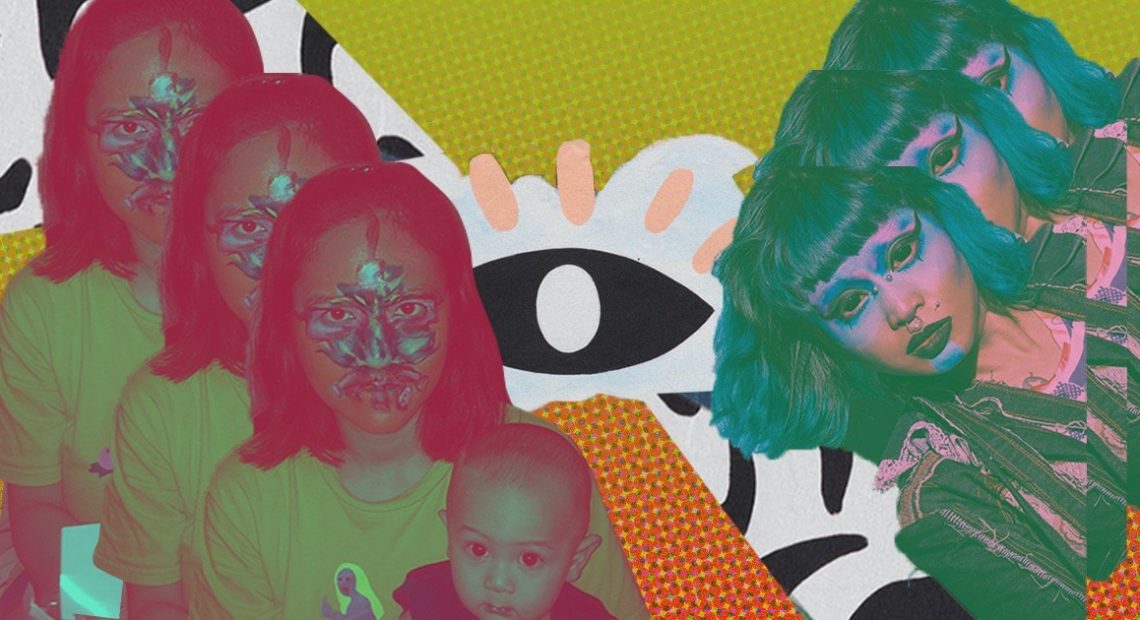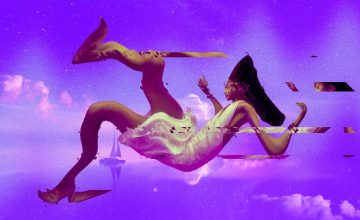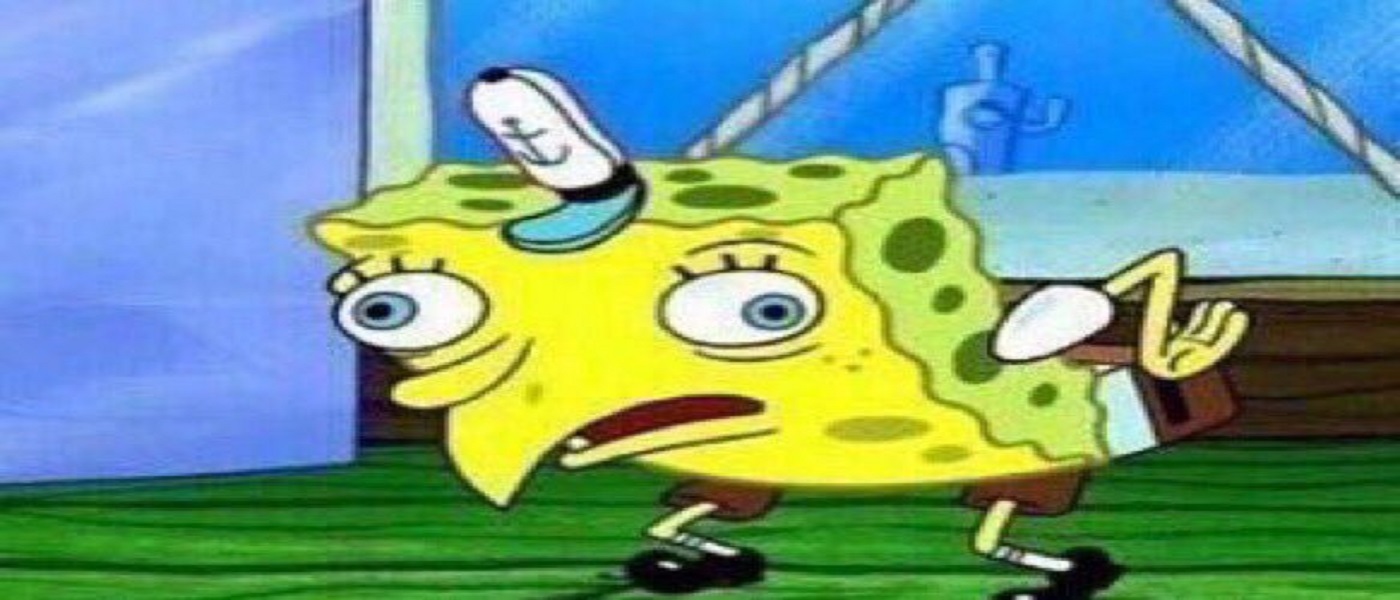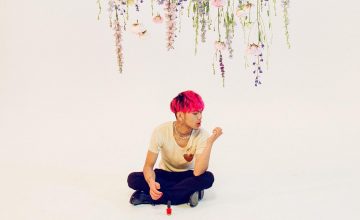Casual exhibit-goers would think Anton Belardo and Maria Jeona Zoleta absolutely agree on their vivid depictions of reality. This would be a misconception. Anton (a.k.a. Jellyfish Kisses) calls his work a confessional diary masquerading as an unearthly, possessed housewife from the ’60s. Jeona’s explanation is both brief and mystifying: “[My art is] a burst of magic rainbow sparkle energy…from my vagina. And Madonna is my vagina, and my vagina is a vampire.”
Jeona and Anton delve into the struggles they face in the arts and what lies ahead for the local art scene.
How is the art world making space for women and queer artists? How are you making space for yourself?
Anton: The local art scene is a lot more accepting in comparison to other industries. Mas free kami as artists, because we’re working with abstract ideas. Mahilig kami mag-dissect ng mga things. Pero, ’yung visibility ng queer people ay konti lang. Sobrang limited, closeted pa sila. Kung hindi naman sila closeted, hindi sila nag-iidentify as queer. Madami sa kanila nag fi-fit in pa rin sa archetype ng cisgender passing. Straight-acting. Sobrang handful lang ’yung openly queer artists locally, at ’yung major reasons din niya are stigma and possible discrimination. Pinagpagusapan lagi ito ng mga friends ko, meron silang mga fears that they might not be taken seriously. For gay guys, mas preferred nila maging discreet or “paminta” [closeted] in other terms. I’m not here to judge them, kasi valid naman ang mga fears na ’yun. As a country, we’re very religious and conservative. ’Yung mga negative traits sa isang conservative country, ginagawa ko siyang advantage. I’m loud, I’m experimental, I’m more out. Important ’yung pagiging authentic.
Jeona: Maganda ’yung sinabi mo. May isang artist, marami siyang mga disguises. Pwede mo naman ma-transcend ’yung definitions. “Human” lang din ’yun.
Anton: And kasi very out siya. ’Yung sinasabi ko lang kanina are mga artists na hindi nila kaya pa. Hindi pa sila ready to be like him na walang takot.
Read more: Go on a creative crawl at this year’s 10 Days of Art
Jeona: What does it take for others to be as expressive as you are? I’m just curious. Like what you said, cisgender…?
Anton: Yes, archetype ng cisgender. Someone who fits the typical female or male roles. Hindi siya umaalis sa normal. Ikaw, hindi kita nakikita as an archetype, girl. Experimental ka, alam mo ’yun? Tsina-challenge mo ’yung pagiging babae. Feeling ko choice lang talaga being out there. Willing ka na ba to put yourself to be judged by people? As Jellyfish, kahit papano naju-judge ako. Nakakatakot pa rin ’to, kinakapalan ko lang talaga ’yung mukha ko. [laughs]
’Yung mga negative traits sa isang conservative country, ginagawa ko siyang advantage. I’m loud, I’m experimental, I’m more out. Important ’yung pagiging authentic.
What’s missing in the art industry?
Jeona: Collectors, in general. ’Yung mga taong may pera na pwedeng mag-decide. [laughs] ’Yung iba, hindi sila talagang experimental. ’Yun ’yung kulang, ’yung mas out there na curator, o ’yung gallery mismo. Ang sobrang conservative ng mga bumibili. Kulang pa ng mas bata, mas kapal na mukha, ’yung mga baliw.
Anton: Agree ako ’dun. Minsan parang feeling ko gusto i-tone down lagi.
Jeona: Nag-didictate sila na “ito na lang gawin mo!”
How has the art world changed through the years?
Jeona: When I was starting out, wala pa akong nakita na bata o babeng artist na sobrang out there. Nahanap ko lang ’yung Artforum sa Booksale randomly, ’tas nakita ko si Ryan Trecartin. Iniisip ko, “’Tang ina, ang lupit nito. Art ba ’to?” Siya ’yung sobrang nag-influence sa akin. Ang fun niya, tapos queer din siya. May nabasa rin akong Eros poetry book from my professor Yasmin Almonte, at ’dun lang ako unang nakakita ng isang naked woman sa painting. Kaya ako nagpa-paint ng ganon, kasi wala akong nakikita noon.
I even started with performance art. For college, I had an artwork na cellphone ’yung pinasa ko, puro mga selfie na nagli-lipstick ’yung laman, ’yung may mga hubad-hubad. Sabi ng professor ko, “What would film students think of your work?” Ang lo-fi daw. But that’s the whole freaking point. Nilalabanan ko rin ang mga ibang forces sa mundo. Tina-try ko lang to be as pure as possible.
Anton: As authentic as possible.
Read more: All the new (and the old) stuff to expect in this year’s Art Fair
Jeona: Oo, ganun. ’Nung Grade 4 ako, gusto ko na maging artist. Pero wala naman akong naririnig. Baka si Nena Saguil, si Pacita Abad. ’Yung works nila abstract, landscapes. Hindi katulad ng German Expressionists na “magpa-paint ako habang nakahubad.” It’s about time na magkaroon ng ganong representation sa atin. Tayo nga, nakahubad ’yung mga tao sa forest. Where did all this conservatism come from, anyway?
Anton: Sa akin naman din, naka-relate ako sa sinabi mo. Hindi ako 100 percent familiar sa art scene natin, may mini circle lang ako of friends. Galing pa ako sa ibang field before this in fashion. ’Yung art ngayon, mas mainstream na siya. Ngayon, punta ka lang sa mall, meron ka nang makikita.
Nag-iimprove naman din ’yung women and queer representation sa local art scene. Pero, I think it will take a lot of time para maging open talaga ’yung audience for it. Ngayon pa lang, nadi-divide na tayo sa issues with the SOGIE bill. Nakikita mo na kaagad kung paano ka-conservative ’yung country. Pagtiningnan mo in the long run, mahaba pa ang laban for diversity. Hindi lang for the art world, but as a country rin.
Jeona: Matagal pa.
Anton: Malayo-layo pa.
Jeona: Sana pag nangyari ’yun, buhay pa tayo.
Anton: At sana ma-experience rin siya ng baby mo. Kung paano man mag-identify ’yung baby mo, hindi siya matatakot to express himself. Pero, kung ikaw ang mommy, he’ll be encouraged to be more himself.
Jeona: Hopefully. Conservative ’yung asawa ko, so. [laughs]
Anton: At least, ikaw ’yung balance!
Jeona: Inevitable din naman ’yung mag-evolve ’yung curators and audience. Hopefully. Nakakainis lang siguro ’yung mga packaging, kunwari “colorful artist.”
Anton: Ay, gets, parang kailangan ka i-force into a label. Palagi nga tayong kinukumpara kasi colorful daw tayo pareho. Sinasabi nila clones tayo. Para di ako mairita, iniisip ko naman na love ko si Jeona and love ko ’yung work niya. May similiarities, pero hindi dahil porke’t colorful kami pareho, pareho ’yung work namin.
Jeona: Ganun lang kasi ’yung nage-gets nila dito.
Pagtiningnan mo in the long run, mahaba pa ang laban for diversity. Hindi lang for the art world, but as a country.
How should the industry push for more diversity?
Jeona: Sa tingin ko, maraming mga factors na-i-influence ng mga matatanda.
Anton: Kailangan din natin maging more open and more educated sa certain things.
Jeona: Yes, more education, tama.
Anton: Madaming topics na kailangan nating aralin. Dapat willing tayong maging open sa mga bagong ideas. Let’s say ’yung mga gender identities. Fairly new pa ’yung topic na ’yun, dami pang nag-dedebate. Sa art scene, siguro magsta-start siya with curators. Pinaka importante rin ’yung audience itself. Sa mga progressive countries, mas naiintindihan na nila ’yung mga abstract concepts na ’to, and with that, nababawasan na ’yung fear ng mga artists and queer individuals to come out and become their authentic selves.
Read more: Art appreciation 101: How to view art beyond the ‘gram
Sa ibang bansa, diba Jeona, ’yung representation ng women and queers na improve na in comparison to before? Pero, pag-pinansinin mo, hindi pa siya ganun ka equal. Kunwari, seven artists. It’s either limang artists na lalake, dalawang artists na babae. Laging mas konti ’yung women na binibigay na spotlight. And for queer artists, minsan wala ka pang makikita sa lineup na seven na ’yun. Baka nagtatago sila, hindi sila out, or mahirap pa tanggapin ’yung works nila sa mainstream. Pag ibang bansa, ang dami-dami na mga queer artists na out, mas madami ng women artists na out there. Pero dito, majority pa rin ay mga straight males.
Jeona: Iniisip nila hindi kaya, lalo pa kung may baby.
Anton: Uy, pero ang hirap daw maging artist tapos may baby.
Jeona: Tapos super judgmental pa. Parang pag may baby, hindi mo magagawa. Hindi totoo ’yun, mas marami kang energy.
Art by Zaila Mae Urmeneta
This story was originally published in our fifth anniversary issue and has been edited for web. The digital copy of Scout’s 36th issue can be accessed here.

























Comments